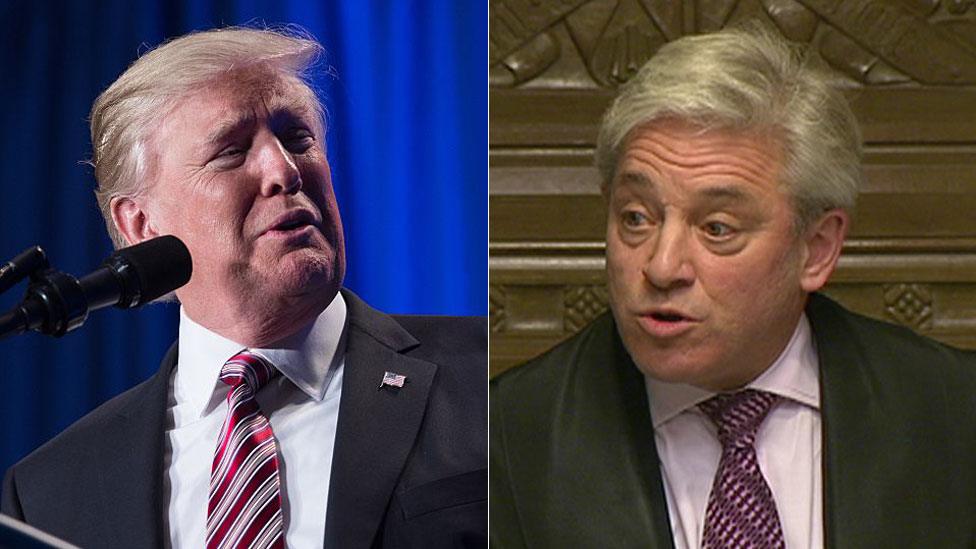Lucky escape, but for how long?
- Published
- comments

On 10 June last year at 4.20pm, Parliament might have burned down.
Workmen spotted a fire in plant room Q on the roof of the Victorian Palace of Westminster.
Down in the Commons Chamber, MPs were listening to a statement on British Home Stores....
Up on the roof, the workmen and firefighters put the blaze out.
Later investigation suggested an electrical fault had been to blame.
But imagine what would have happened if they hadn't spotted it, or if the fire had started after knocking-off time, or at a weekend. The result could have been catastrophic, because the Palace is dangerously vulnerable to fire, thanks to the network of ventilation shafts that criss-cross the main building.
It's one of 60 such incidents which could have led to disaster since 2008 - and it is far from impossible that the next such event could result in MPs and peers being bundled out of their chambers in mid-debate, possibly by torchlight, if the electrical system packs up.
This week the Clerk of the Commons, David Natzler, told the Public Accounts Committee that if MPs and peers managed to continue sitting in their hallowed chambers until the projected start of a massive restoration project, external, in 2022, it would be "on a wing and a prayer".
And under heavy cross questioning, he insisted that if MPs rejected the idea of moving out of Parliament and tried to stay put, with repair work taking place around them, they would probably end up facing an emergency evacuation. There was just too much chance of something going wrong.
The home of Parliament may be one of the three or four most recognisable buildings on the planet, but behind the gilded Victorian gothic splendour of the décor, it is in a terrible state.
In the prestigious offices reserved for top MPs, on the Upper Committee corridor, there's an audible crackle from the plugs. The lights could go phut!
Crumbling asbestos might leak out, or the sewers could back up and turn the place into an out of control metaphor. Water could come cascading through the roof in some key area. And there are genuine fears that, if a fire took hold, it would be impossible to control.
But still Parliament has not voted on plans to move out of its venerable home, to allow a five-year "Restoration and Renewal" programme (or R&R in Westminster jargon) to sort the place out.
Committee's recommendation
Last year, a committee of MPs and peers recommended that Parliament approves plans to clear out of the building for, perhaps, five years to allow the building to be revamped, and helpfully provided a draft motion to be put before the House, external.
Last week, the Leader of the House, David Lidington told MPs: "The government's intention is that there should be debate in government time before the Easter recess." Don't hold your breath; the government had previously promised debates "in the Autumn," and "before Christmas," but no debate has been scheduled - and behind the scenes, many MPs suspect that the political will is simply not there to stump up the billions required.
There is no doubt that the scale of the project is vast - the Victorian buildings have 28 acres of floorspace, 1,100 rooms and 3,800 bronze Pugin-designed windows, not to mention hundreds of miles of pipes cables and steam ducts, many of which could fail at any moment.
The concerns of government, the two Houses of Parliament, the heritage lobby and the taxpayer, not to mention issues of security and accountability all have to be balanced, and at the hearing another witness, Tony Meggs, the Chief Executive of the Government's Infrastructure and Projects Authority, suggested that one reason for opting for the most rapid scheme possible was to minimise the danger of a costly change of course imposed after the politicians changed their minds.
Mr Natzler's evidence to the PAC, which is investigating whether the vast sums being mooted are really justified, gave a foretaste of the delicate diplomacy already needed to soothe ruffled sensibilities.
It was a masterpiece of deferential insistence. Of course, he said, it would be technically possible to find a way to keep MPs in the building if they absolutely insisted. He then painted a picture of the parliamentarians picking their way through polythene tunnels to get to their Chamber, hoping the insulation protecting them from the asbestos-contaminated air would hold. All at a vast additional cost.
It was possible, but not feasible.
It was a very strong performance and clearly swung opinion on the notoriously hard-nosed PAC. Richard Bacon, the senior Tory MP on the committee, previously an R&R-sceptic, was impressed, telling me afterwards that he now believed the best option was for the parliamentarians to move out so that the work could be done as quickly as possible.
The team of parliamentary officials who have been working on the R&R project are convinced there is no realistic alternative to emptying the Palace of Westminster, while the work is done; their toughest task may yet be to convince the parliamentarians who must go, and the ministers who must pay, but they edged closer to that goal, this week.
* I'll be reporting on the PAC hearing and talking to Richard Bacon on Friday night's Today in Parliament on BBC Radio 4 at 11.30pm.
- Published7 February 2017

- Published6 February 2017
